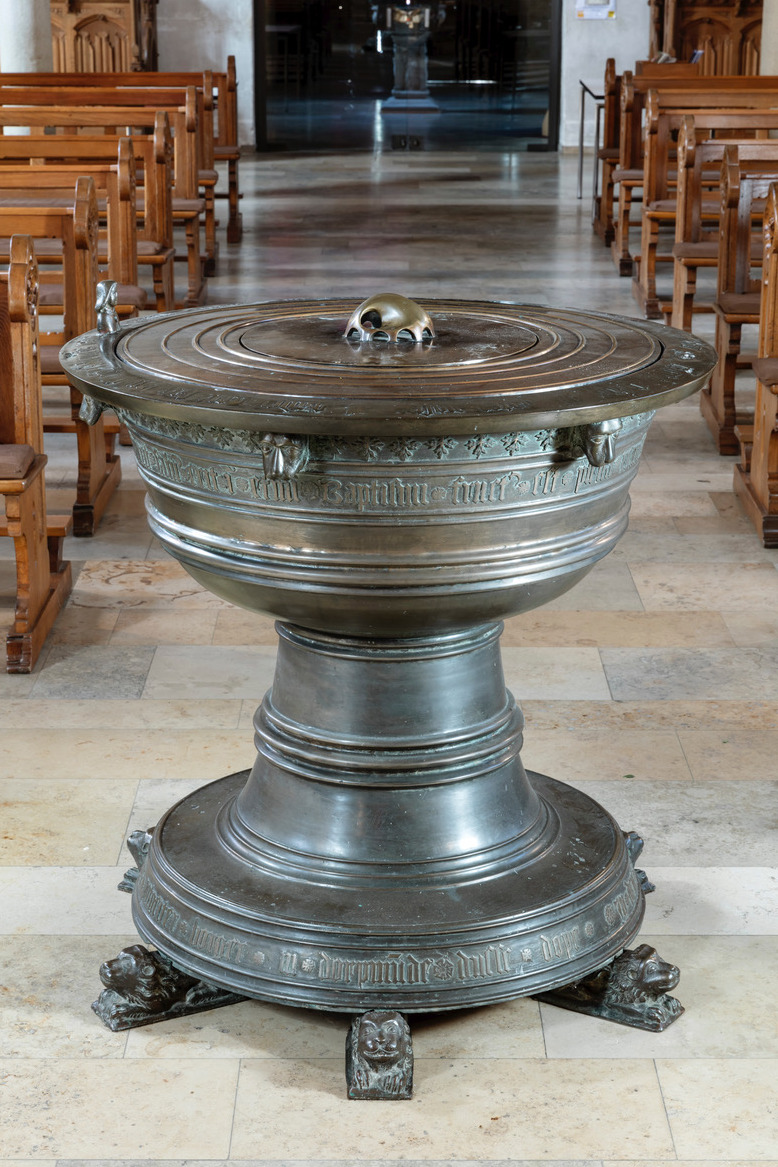Epigraphies of the Corpus
Textual Negotiations of Sacred Power on Medieval Liturgical Artefacts
2020–2025
RFB11
This project focuses on inscriptions on liturgically used objects of the high and late Middle Ages. It concentrates on those vessels that are part of ritual ceremonies which mediate divine power and supernatural agency (virtus). On the one hand, this power is often performed and temporarily transmitted by the sacred words spoken during the ritual, but on the other hand, it is also permanently mediated by inscriptions being placed on the artefact. Additionally, there is a second aspect which plays an important role for the selection of the artefacts, which shall be investigated too: both the ritual acts and the objects used during these ceremonies are connected to different imaginations of bodies (corpora) being affected by the divine power. Thus, the chalice and paten are used during the celebration of the Eucharist, when the vine and the bread are liturgically transformed into the sanguis Christi and the corpus Christi; during the baptism, the believer is incorporated into the corpus mysticum, the church, and reliquaries and reliquary shrines contain relics as part of the powerful totum corpus of a particular saint.

In this project we are going to investigate the different functions of the inscriptions on liturgical vessels and reliquaries and how these inscriptions might reflect the ritual use of the artefacts (potentially by giving a reference to the liturgical texts that are recited during the ceremonies). Furthermore, we are going to trace, whether the inscriptions mediate the divine power or the agency (virtus) of the Saint. From an art historical point of view the project focuses on the relation between the inscriptions on the one hand and the form or structure of the objects as well as their pictorial programme on the other hand.
Within the Cluster of Excellence, this project cooperates especially with Research Field A Artefact Profiling in order to construct three-dimensional virtual models of the investigated objects and their (partially hidden) inscriptions (e.g., at the bottom). Furthermore, these models might facilitate to explore performative meanings and the interrelationships of these objects (e.g., between inscriptions on the inside and the outside). Hereby we link the achievements of contemporary technologies with art historical and liturgical research in order to investigate the role and the surplus value of inscriptions on ritually used artefacts.
People
Project lead: Jochen Hermann Vennebusch
